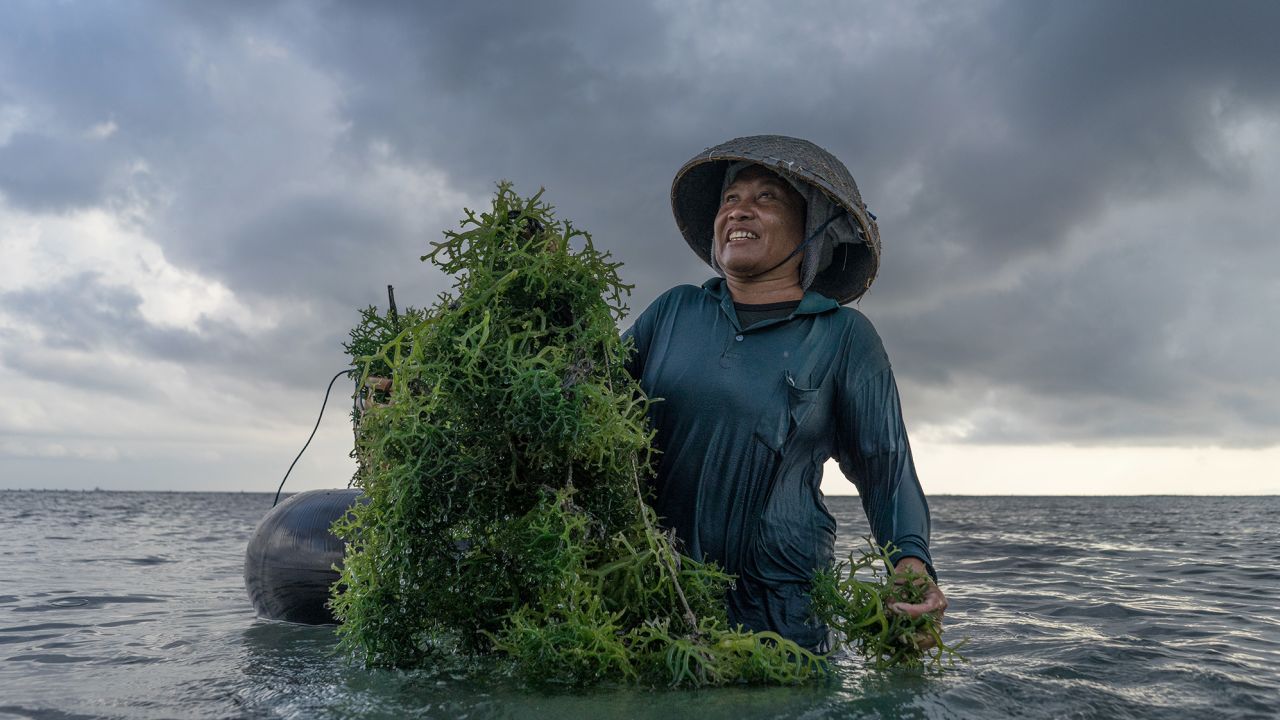
Seaweed might be the greatest untapped resource we have on this planet.
It can be a nutritious food, an alternative to plastic, restore our oceans and could even help tackle climate change. But while there are 12,000 different types of seaweed, we know how to cultivate fewer than 30. If we’re to make the most of this miraculous plant-like algae, we must learn to love it and learn to grow it sustainably.
Sustainable food source
Today, our land-based food systems are contributing to global warming and biodiversity loss, but more than 800 million people are starving. Meanwhile, oceans cover more than two thirds of our planet, but they contribute less than 3% of our total food calories, according to some estimates.
What’s more, dried, seaweed retains its nutrients. A nutritious product with a long shelf life and no need for cold storage on its journey to the consumer is good news, both for emerging economies, where refrigeration during transport is not always available, and for our climate, because it saves on the carbon emissions that come from keeping perishable produce fresh.
But despite its huge potential, seaweed cultivation is currently largely limited to Asia, which is responsible for 98% of the 35 million metric tons of seaweed sold worldwide.
But even when humans don’t eat it, seaweed has other benefits for food production: it can be used as a natural biostimulant for plants that can replace fertilizers, and as a feed for animals, with some research suggesting it can reduce the amount of planet-heating methane emitted by cattle.
A green solution
Beyond food production, seaweed offers a host of other environmental benefits.
It has been used to create alternatives to plastic packaging that are biodegradable and compostable, and even edible.

Some companies are using it as an alternative textile to cotton, a plant that uses huge quantities of land, water and pesticides.
It also has potential as a scalable, nature-based solution for tackling climate change. As it grows, seaweed draws down carbon dioxide – and it can grow at an astonishing rate. Giant kelp can grow up to 50 centimeters a day, reaching heights of around 60 meters.
There has been some investigation into the potential of seaweeds as a carbon store, and although more is needed, one study says that seaweed habitats are believed to be the most productive of all coastal vegetated ecosystems, and suggested that the world’s seaweed sequesters as much carbon as all the planet’s seagrass meadows, saltmarshes and mangroves combined.
What’s more, seaweed can help restore and regenerate our oceans. It absorbs pollutants such as heavy metals and nitrates, and it encourages biodiversity in our oceans by providing a critical habitat for marine life, and a place for smaller creatures to evade predators.
Under threat

But just as we are recognizing its untapped potential, seaweed is becoming increasingly vulnerable. California, Norway and Tasmania have all lost more than 80% of their kelp in recent years, the result of climate change, pollution and overfishing.
We urgently need to protect, replant and cultivate these ecosystems or they will disappear.
I have three kids, and they need to hear solutions to the environmental problems facing our planet. Seaweed can be one of them.









